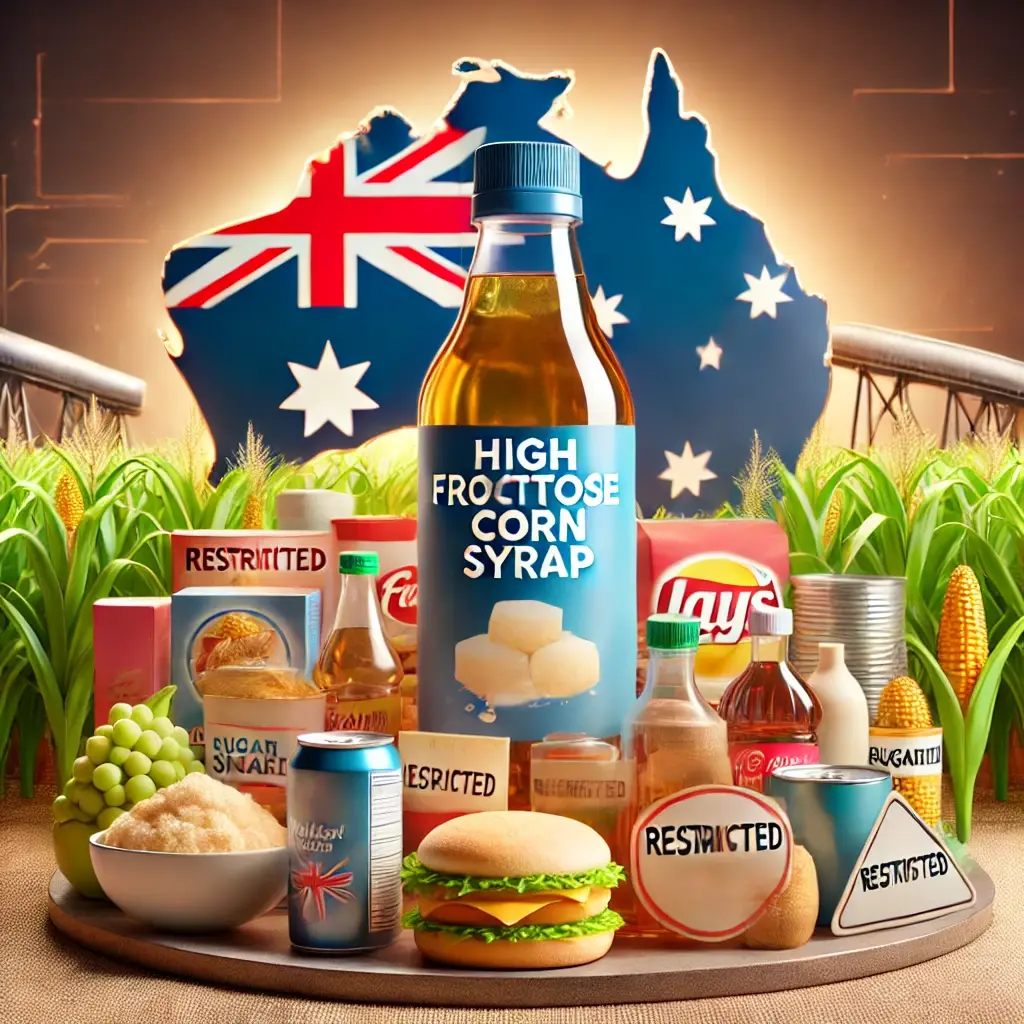High fructose corn syrup (HFCS) is legal in Australia but its usage is restricted—particularly in comparison to countries like the United States. Although Food Standards Australia New Zealand (FSANZ) permits HFCS, its use is relatively minimal due to Australia’s food standards, consumer health trends, food production methods, and the country’s large sugarcane industry.
Limited use of high fructose corn syrup in Australia
Although HFCS is allowed in Australia, it is almost always evident in locally sourced products. Instead, Australian companies mostly depend on cane sugar, a naturally occurring sweetener readily available in the surroundings. Australia grows so much sugarcane, so cane sugar is less costly than imported corn-based sweeteners such HFCS.
FSANZ regulations
Food Safety Standards Australia New Zealand (FSANZ) regulates dietary recommendations for both Australia and New Zealand. HFCS is permitted in food products, but packaging must clearly label its presence. This transparency allows consumers to make informed choices and avoid products high in HFCS if they wish.
Why is HFCS not popular in Australia?
Several factors contribute to the limited use of HFCS in Australia:
- Natural sweeteners: Australian cooks particularly like natural sweeteners including maple syrup, honey, and cane sugar. Many find them more freely available and superior replacements.
- Consumer awareness: Australian customers are more health-conscious and many of them know the likely risks connected with too high HFCS intake. This has made somewhat well-known natural, superior replacements for highly processed foods rather popular.
- Import dependency: Since corn is not widely grown in Australia, HFCS must be imported, which increases production costs and reduces its appeal to manufacturers.
What is high fructose corn syrup?
HFCS is produced by enzymatically converting a portion of the glucose in corn syrup into fructose, making it sweeter. There are different types of HFCS with various degrees of glucose and fructose:
- HFCS-42: Frequently found in convenience foods such as baked goods and canned fruits.
- HFCS-55: Primarily used in sweetened beverages like soft drinks. It contains about 55% fructose and 45% glucose.
- HFCS-90: A more concentrated version used in specialty products.
Why is HFCS used?
HFCS is popular in many countries, especially in the United States, for several reasons:
- Cost-effective: Corn is highly subsidised in the U.S., making HFCS cheaper than cane sugar.
- High sweetness: Manufacturers prefer using HFCS instead of sugar as its sweetness is higher enabling them to use fewer quantities.
- Easy to handle: As a liquid, HFCS is easier to transport and mix into products compared to crystalline sugar.
Health concerns surrounding high fructose corn syrup
The health risks associated with HFCS have been a major topic of debate. HFCS has been linked to several serious health conditions when consumed in excess:
1. Obesity
The question of whether there exists a link between HFCS consumption and obesity is one of the most prominent issues. It has been established that excessive use of soft drinks with HFCS sweeteners causes obesity and excess body fat. This is because, especially in liquid formulation, HFCS is ingested in a way that circumvents certain regulatory mechanisms for the consumption of food.
2. Type 2 diabetes
Overconsumption of HFCS has been linked to insulin resistance, a key factor in the development of type 2 diabetes. HFCS raises blood sugar levels faster than regular sugar, potentially contributing to long-term insulin resistance.
3. Heart disease
Heart disease is another area of concern. There is also worry that consumption of HFCS may lead to cardiovascular health issues. Research has established that diets containing high levels of fructose can increase the bad cholesterol (LDL) experienced turning higher the chances of having heart disease.
Is high fructose corn syrup worse than cane sugar?
HFCS and cane sugar might have structural resemblance on a molecular level but the consumption of both may yield varying results in the body. This is maybe because both have glucose as well as fructose but it has been found in certain researches that HFCS induces more fat production in the liver which is a risk factor for metabolic related illnesses. Nonetheless, such observations are mostly brought about by feeding and do not concern only HFCS in isolation.
When consumed in moderation, HFCS may not pose a greater health risk than cane sugar. The real focus should be on reducing overall added sugar intake in order to maintain good health.
HFCS in imported products
While HFCS is not widely used in Australian-made foods, it can still be found in imported products, especially those from the United States. Some common imported products that may contain HFCS include:
- Soft drinks and sodas
- Packaged snacks and cookies
- Breakfast cereals
- Condiments like ketchup and salad dressings
- Sweetened dairy products
If you’re looking to avoid HFCS, it’s important to check food labels carefully, especially when purchasing imported goods.
How to avoid high fructose corn syrup in your diet
If you’re concerned about HFCS and its potential health risks, here are some practical ways to reduce your intake:
- Read food labels: Look for ingredients like “high fructose corn syrup,” “glucose-fructose syrup,” or “corn sugar,” all of which indicate the presence of HFCS.
- Choose natural sweeteners: Choose foods sweetened with cane sugar, honey, or maple syrup instead of HFCS.
- Limit processed foods: HFCS is commonly found in highly processed foods. Reducing your intake of processed foods can significantly lower your HFCS consumption.
- Cook at home: Preparing your own meals allows you to control the ingredients, making it easier to avoid HFCS.
Conclusion
While high fructose corn syrup is not prohibited in Australia, it is a lot less common in usage than in countries such as the United States. The availability of cane sugar, health-conscious people, and stringent food labelling rules has made HFCS usage in food products in Australia quite low. For Australians who wish to avoid HFCS, especially in imported products, it is important to read food labels and opt for natural sweeteners. By staying informed, Australians are able to observe a healthy diet that cuts down on sugars such as HFCS that are added into food products.






